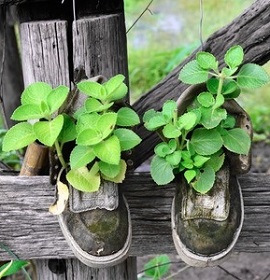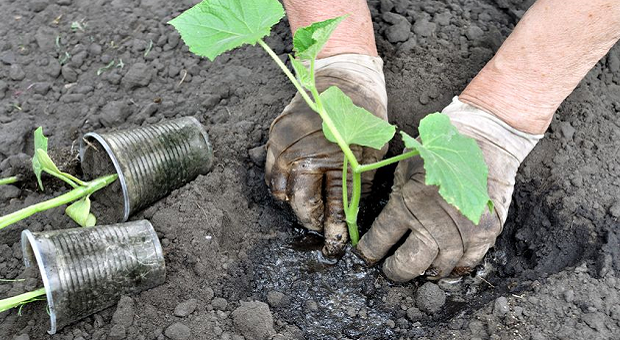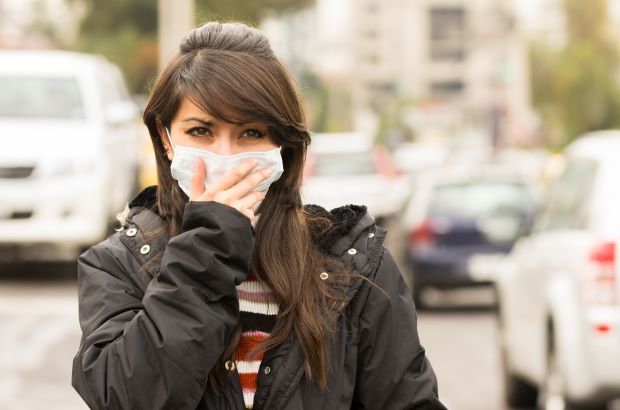When a major crisis strikes, there will be a great need to grow food if your bug out group is to survive and flourish. There will be many problems that must be worked out because the bug out plan is only a guide, and it may need to change based on necessity.
Protecting new garden plots and harvest storage areas literally means the difference between life and death for the group.
Start Off with the Right Seeds
There are three types of seeds that can be purchased; but only one is best for long term survival. Make sure that you know the differences and also that you know exactly what you are buying.
GMO seed
A Genetically Modified Organism is an organism whose genetic material has been altered by using genetic engineering techniques. GMO seeds may include genes from fish, herbicide resistant proteins, and other chemicals instead of DNA from a natural plant.
Changes to non-GMO crops can be made by accidental cross pollination with GMO variants. These seeds are not good for survival gardening because there is no telling whether the seeds will be viable from generation to generation. Even if plants are produced, the food from them may be poisonous because of unstable DNA in the organism.
Heirloom seeds
 Heirloom seeds come from a plant that has been passed from generation to generation without change. Many Heirloom seeds have been grown, saved, and passed down for over 100 years.
Heirloom seeds come from a plant that has been passed from generation to generation without change. Many Heirloom seeds have been grown, saved, and passed down for over 100 years.
These are the best ones for long term survival seeds because they are genetically stable and future seeds are more likely to germinate and produce plants that live a full life cycle.
Many people also prefer heirloom seeds because fruits and vegetables have superior taste and texture.
Hybrid seeds
Hybrid vegetable seeds are created when a plant breeder intentionally cross pollinates two different varieties of a plant so that the offspring contains the best traits of each parent plant. The desired combination of the characteristics may include bigger size or better disease resistance.
To make a Hybrid plant it takes years of hard work and much trial and error. While hybrid seeds have some advantages, they usually do not last from generation to generation.
Best Areas to Grow Your Food in…
…Forests
Forests would be a good choice for the hidden gardens with their good land cover and natural camouflage, especially if there is a meadow at the edge of the forest. The soil in the forest is also good for gardening because the soil tends to be thick, rich and full of earthworms.
Plant low growing vegetables in the area just inside the meadow. Do not plant in organized rows. The average non-gardening individual would not know or realize that they were standing in a garden plot.
…Mountainous Terrain
Depending on how steep, high, or rouged the mountains are will determine if this area is suited to grow small garden plots. The lower the altitude the better the gardens will grow.
There will be some natural cover to help hide the gardens. As the altitude gets higher the thinner the ground cover and the greater the chance that the garden will be noticed.
As you get to the top of the mountainous terrain there is very little ground cover, water, and very little soil in this area. This would make a poor area for gardening.
…Along Rivers and Streams
Along rivers and streams make good gardening plot areas as long as these garden plots are above the flood plains. Here there is plenty of good water and after each of the spring thaws there is a new supply of good top soil.
…Near Swamps
Swamps are a very poor choice for gardening plots. There is too much water and not enough good dry land for the gardening.
Health risks outweigh any consideration of living in or near swamps. If the poisonous snakes do not get you, deadly swamp diseases will.
Of the four basic land types discussed above, I would recommend the forest with meadows, planting in the lower altitudes of mountainous terrain, and planting along rivers and streams.
These locations for the gardening plots should be well off the grid in the middle of nowhere. In these locations there would be a very slim chance of unwanted visitors stumbling over small, or well disguised garden plots.
Making it a point to include wild edible plants will also greatly increase your ability to hide nutritious foods and keep them hidden in plain sight.
How to Design Garden Plots
Survival decision point: Would it be best to use a couple of large gardening plots close together with defined rows or would it be better to use many small gardening plots all over the countryside that were camouflaged to look like something other than a gardening plot?
It is best to use many little garden plots instead of a couple of large ones. If a couple of the small gardening plots were destroyed by either animals or unwanted intruders there would be a smaller loss to the group than if one of the larger gardens is destroyed.
Each little plot would grow several types of vegetables that are high yield and grow very well in your particular part of the country. The square foot gardening system works and helps to make many highly productive small garden plots. This gardening system was originally designed for roof gardens, small back yards, or very small plots of land.
To use this system all one has to do is multiply the length of the area by the width, which gives you the number of square feet in which to plant. When laying out the gardens do not use straight boundary lines for the edges of the plots, use the lay of the land.
Do not plant in rows in these mini gardens. Instead scatter the seeds within the plot. Try to make the plots look similar to the wild plants growing wild in a meadow or other growing area.
 For vine plants, plant in hanging pots that can be suspended in trees or other high areas. Each of the hanging pot plants would be equal to one hill in the normal garden. What you choose to grow in each pot will determine the number of seeds used.
For vine plants, plant in hanging pots that can be suspended in trees or other high areas. Each of the hanging pot plants would be equal to one hill in the normal garden. What you choose to grow in each pot will determine the number of seeds used.
I have personally used this hanging pot method with very good results. I have grown squash, melons, cucumbers, and tomatoes using this method. The only difference between growing these vegetables in suspended pots is that the stems are thicker and stronger to support the hanging weight of the vegetables.
Typically, vegetables grown on the ground do not need thicker or stronger stems because the weight of these vegetables is sitting on the ground instead of hanging in the air or just touching the ground.
Suspended pot gardens will be safe from human intruders because the average person walking in the dense woods or other terrain does not look up, but mainly down or to the sides.
If you do not want to use the hanging pot method for growing vine plants, then scatter the seeds in fields, forest openings, or meadows and hope for the best. The pattern of these vines growing should be one of natural selection, not one that appears planted by man.
When planting fruit trees do not plant them in an organized orchards. This will point right to the fact that someone in the area is planting and developing a food supply. Instead, plant the fruit trees randomly throughout the forests or other places where these trees can grow and thrive.
Avoid pruning as much as possible, as anyone that sees a newly pruned tree in a post crisis world will realize someone is around that may have valuables to steal.
How to Protect the Garden Plots from Intruders
- All garden plots and orchards will be located well off the beaten path. Man is a creature of habit if he does not travel in this area regularly, the odds are he will not go out of his way unless there is a food shortage. If this is the case all gardens and fruit trees must be guarded.
- Plant in very thick hedgerows that will keep the crops safe from animal or human intruders.
- Planting on unstable ground would make the average person or animal think twice about raiding the garden plots. Just be sure you have a safe means to gather produce once it is ready to harvest.
- Clear out and make a small gardening plot inside of thick brush piles with thorns or fallen tree wood piles. These would make a good natural barrier to keep out all types of varmints or human intruders from the gardening area.
- Use of tree branch collars on trees that have hanging pot gardens in them. This will keep small animals away from the hanging gardens, and also make it harder for humans to climb onto tree limbs. Make sure the collars look old and worn so that others are not alerted to a new presence in the area.
- Use of snares, dead falls, or pit traps to protect the growing areas. This is a good passive way to protect the gardens or fruit trees from animals or human intruders.
- Use roving unscheduled foot patrols that randomly check only a few garden plots at a time, never all of them on one trip. This will keep any human intruders guessing how long before the next security check comes through.
- The use of well camouflaged perimeter guard posts. These guard posts will control the high ground and will be able to observe and control a set number of garden plots. The number of guard posts will be determined by the total number of garden plots. The guard posts are there to protect the food supply from unwanted animals or human intruders.
- The use of bows and arrows, crossbows, or firearms will be used to quietly dispatch any unwanted intruders.
How to Hide Your Harvest from Intruders
Now that you have had a bountiful harvest how do you store it to protect it from spoilage, being eaten by wild animals, or stolen by human intruders? Is canning, drying, or smoking the harvest a good way to protect the food from spoilage? Would hiding the harvest in many containers and locations be a good idea?
Let’s see the answers.
Canning, Drying, and Smoking
The safest and most used way to preserve fresh fruits, vegetables, fish, and meats is by canning, drying, or smoking. If done right all of the bacteria will be destroyed and the items will be safe to eat at a later date. To keep track of the inventory, food shelf rotation, and the food usage, a food logbook is mandatory for the well-being of the group.
For the group’s safety and well-being all of the food storage areas should be well off the beat and path.
Good use of the terrain and the use of camouflage will make the food storage areas hard to locate and break into. If you cannot see it, then you will pass it by, and never know that it is there.
- Camouflaged hidden root cellars located inside the groups compound and located in secret locations outside of the compound.
- Use camouflaged underground caves with a cool year round temperature or underground ice houses.
- Use of sealed bury tubes made of PVC piping that are buried below the frost line. Tubes made from PVC will give you years of good service without leaking.
How to Physically Protect the Storage Sites
- The use of booby traps, snares, dead falls, or pit traps as an unmanned protection system.
- The use of unscheduled roving foot patrols that randomly check the storage areas, but never go near enough to give their location away.
- The use of hidden and well camouflaged perimeter guard posts. These guard posts will control the high ground and observe the countryside around the food storage areas.
- Foot patrols will be armed with a mixture of bows and arrows, crossbows, and firearms to physically defend and protect the storage sites from either animal or human intruders.
In the time after a major crisis, the replacement of food stores, the safe storage of harvested foods, and the safekeeping of seeds is of the greatest importance to the group survival. Failure to do this could mean the end of your group by slow starvation or disease.
The loss of the food could be caused by poorly designed storage areas that allowed animals to break in and eat the food or the theft of the food by human intruders. Either way, the food supply and seeds must be protected at all costs.
This article has been written by Fred Tyrell for Survivopedia.























































































What is this?
Could it be?
…Yet another Fine Post by Mr. Tyrell!
…it ’tis indeed.
Another good thing to add to this would be at least a workable knowledge of “wild” edibles and medicinal plants.
Excellent article!